This article needs additional citations for verification. (June 2017) (Learn how and when to remove this template message) |
Triumph of the Will (German: Triumph des Willens) is a 1935 Nazi propaganda film directed, produced, edited, and co-written by Leni Riefenstahl. It chronicles the 1934 Nazi Party Congress in Nuremberg, which was attended by more than 700,000 Nazi supporters. The film contains excerpts from speeches given by Nazi leaders at the Congress, including Adolf Hitler, Rudolf Hess and Julius Streicher, interspersed with footage of massed Sturmabteilung (SA) and Schutzstaffel (SS) troops and public reaction. Hitler commissioned the film and served as an unofficial executive producer; his name appears in the opening titles. The film's overriding theme is the return of Germany as a great power, with Hitler as the leader who will bring glory to the nation. Because the film was made after the 1934 Night of the Long Knives (on 30 June), many prominent Sturmabteilung (SA) members are absent—they were murdered in that Party purge, organised and orchestrated by Hitler to replace the SA with the Schutzstaffel (SS) as his main paramilitary force.
| Triumph of the Will | |
|---|---|
German theatrical poster | |
| Directed by | Leni Riefenstahl |
| Produced by | Leni Riefenstahl |
| Written by |
|
| Starring |
|
| Music by |
|
| Cinematography |
|
| Edited by | Leni Riefenstahl (uncredited) |
Production company | Reichsparteitag-Film |
| Distributed by | Universum Film AG |
Release date |
|
Running time | 114 minutes / 110 min. (US) |
| Country | Germany |
| Language | German |
Triumph of the Will was released in 1935 and became a major example of film used as propaganda. Riefenstahl's techniques—such as moving cameras, aerial photography, the use of long focus lenses to create a distorted perspective, and the revolutionary approach to the use of music and cinematography—have earned Triumph of the Will recognition as one of the greatest propaganda films in history. Riefenstahl helped to stage the scenes, directing and rehearsing some of them at least fifty times. Riefenstahl won several awards, not only in Germany but also in the United States, France, Sweden and other countries. The film was popular in the Third Reich, and has continued to influence films, documentaries and commercials to this day. In Germany, the film is not censored but the courts commonly classify it as Nazi propaganda which requires an educational context to public screenings.
An earlier film by Riefenstahl—The Victory of Faith (Der Sieg des Glaubens)—showed Hitler and SA leader Ernst Röhm together at the 1933 Nazi party congress. After Röhm's murder, the party attempted the destruction of all copies, leaving only one known to have survived in Britain. The direction and sequencing of images is almost the same as that Riefenstahl used in Triumph of the Will a year later.
Frank Capra's seven-film series Why We Fight is said to have been directly inspired by, and the United States' response to, Triumph of the Will.
Screenplay
The film begins with a prologue, the only commentary in the film. It consists of the following text, shown sequentially, against a grey background:
| Am 5. September 1934
|
| 20 Jahre nach dem Ausbruch des Weltkrieges
|
| 16 Jahre nach dem Anfang deutschen Leidens
|
| 19 Monate nach dem Beginn der deutschen Wiedergeburt
|
| flog Adolf Hitler wiederum nach Nürnberg, um Heerschau abzuhalten über seine Getreuen
|
Day 1: The film opens with shots of the clouds above the city, and then moves through the clouds to float above the assembling masses below, with the intention of portraying beauty and majesty of the scene. The cruciform shadow of Hitler's plane is visible as it passes over the tiny figures marching below, accompanied by an orchestral arrangement of the Horst-Wessel-Lied. Upon arriving at the Nuremberg airport, Hitler and other Nazi leaders emerge from his plane to thunderous applause and a cheering crowd. He is then driven into Nuremberg, through equally enthusiastic people, to his hotel where a night rally is later held.
Day 2: The second day begins with images of Nuremberg at dawn, accompanied by an extract from the Act III Prelude (Wach Auf!) of Richard Wagner's Die Meistersinger von Nürnberg. Following this is a montage of the attendees preparing for the opening of the Reich Party Congress, and footage of the top Nazi officials arriving at the Luitpold Arena. The film then cuts to the opening ceremony, where Rudolf Hess announces the start of the Congress. The camera then introduces much of the Nazi hierarchy and covers their opening speeches, including Joseph Goebbels, Alfred Rosenberg, Hans Frank, Fritz Todt, Robert Ley and Julius Streicher. Then the film cuts to an outdoor rally for the Reichsarbeitsdienst (Labor Service), which is primarily a series of quasi-military drills by men carrying spades. This is also where Hitler gives his first speech on the merits of the Labour Service and praising them for their work in rebuilding Germany. The day then ends with a torchlight SA parade in which Viktor Lutze speaks to the crowds.
Day 3: The third day starts with a Hitler Youth rally on the parade ground. Again the camera covers the Nazi dignitaries arriving and the introduction of Hitler by Baldur von Schirach. Hitler then addresses the Youth, describing in militaristic terms how they must harden themselves and prepare for sacrifice. Everyone present, including General Werner von Blomberg, then assemble for a military pass and review, featuring Wehrmacht cavalry and various armored vehicles. That night Hitler delivers another speech to low-ranking party officials by torchlight, commemorating the first year since the Nazis took power and declaring that the party and state are one entity.
Day 4: The fourth day is the climax of the film, where the most memorable of the imagery is presented. Hitler, flanked by Heinrich Himmler and Viktor Lutze, walks through a long wide expanse with over 150,000 SA and SS troops standing at attention, to lay a wreath at a First World War memorial. Hitler then reviews the parading SA and SS men, following which Hitler and Lutze deliver a speech where they discuss the Night of the Long Knives purge of the SA several months prior. Lutze reaffirms the SA's loyalty to the regime, and Hitler absolves the SA of any crimes committed by Ernst Röhm. New party flags are consecrated by letting them touch the Blutfahne (the same cloth flag said to have been carried by the fallen Nazis during the Beer Hall Putsch) and, following a final parade in front of the Nuremberg Frauenkirche, Hitler delivers his closing speech. In it he reaffirms the primacy of the Nazi Party in Germany, declaring, "All loyal Germans will become National Socialists. Only the best National Socialists are party comrades!" Hess then leads the assembled crowd in a final Sieg Heil salute for Hitler, marking the close of the party congress. The entire crowd sings the Horst-Wessel-Lied as the camera focuses on the giant Swastika banner, which fades into a line of silhouetted men in Nazi party uniforms, marching in formation as the lyrics "Comrades shot by the Red Front and the Reactionaries march in spirit together in our columns" are sung.
Shortly after he came to power Hitler called me to see him and explained that he wanted a film about a Party Congress, and wanted me to make it. My first reaction was to say that I did not know anything about the way such a thing worked or the organisation of the Party, so that I would obviously photograph all the wrong things and please nobody—even supposing that I could make a documentary, which I had never yet done. Hitler said that this was exactly why he wanted me to do it: because anyone who knew all about the relative importance of the various people and groups and so on might make a film that would be pedantically accurate, but this was not what he wanted. He wanted a film showing the Congress through a non-expert eye, selecting just what was most artistically satisfying—in terms of spectacle, I suppose you might say. He wanted a film which would move, appeal to, impress an audience which was not necessarily interested in politics.
—?Leni Riefenstahl
Riefenstahl, a popular German actress, had directed her first film called Das blaue Licht (The Blue Light) in 1932. Around the same time she first heard Hitler speak at a Nazi rally and, by her own admission, was impressed. She later began a correspondence with him that would last for years. Hitler, by turn, was equally impressed with Das blaue Licht, and in 1933 asked her to direct a film about the Nazis' annual Nuremberg Rally. The Nazis had only recently taken power amid a period of political instability (Hitler was the fourth Chancellor of Germany in less than a year) and were considered an unknown quantity by many Germans, to say nothing of the world.
In Mein Kampf, Hitler talks of the success of British propaganda in World War I, believing people's ignorance meant simple repetition and an appeal to feelings over reason would suffice. Hitler chose Riefenstahl as he wanted the film as "artistically satisfying" as possible to appeal to a non-political audience, but he also believed that propaganda must admit no element of doubt. As such, Triumph of the Will may be seen as a continuation of the unambiguous World War I-style propaganda, though heightened by the film's artistic or poetic nature.
Riefenstahl was initially reluctant, not because of any moral qualms, but because she wanted to continue making feature films. Hitler persisted and Riefenstahl eventually agreed to make a film at the 1933 Nuremberg Rally called Der Sieg des Glaubens (Victory of Faith). However the film had numerous technical problems, including a lack of preparation (Riefenstahl reported having just a few days) and Hitler's apparent unease at being filmed. To make matters worse, Riefenstahl had to deal with infighting by party officials, in particular Joseph Goebbels who tried to have the film released by the Propaganda Ministry. Though Der Sieg des Glaubens apparently did well at the box office, it later became a serious embarrassment to the Nazis after SA Leader Ernst Röhm, who had a prominent role in the film, was executed during the Night of the Long Knives. All references to Röhm were ordered to be erased from German history, which included the destruction of all copies of Der Sieg des Glaubens. It was considered lost until a copy turned up in the 1990s in the United Kingdom.
In 1934, Riefenstahl had no wish to repeat the fiasco of Der Sieg des Glaubens and initially recommended fellow director Walter Ruttmann. Ruttmann's film, which would have covered the rise of the Nazi Party from 1923 to 1934 and been more overtly propagandistic (the opening text of Triumph of the Will was his), did not appeal to Hitler. He again asked Riefenstahl, who finally relented (there is still debate over how willing she was) after Hitler guaranteed his personal support and promised to keep other Nazi organizations, specifically the Propaganda Ministry, from meddling with her film.
The film follows a script similar to Der Sieg des Glaubens, which is evident when one sees both films side by side. For example, the city of Nuremberg scenes—even to the shot of a cat included in the city driving sequence in both films. Furthermore, Herbert Windt reused much of his musical score for that film in Triumph des Willens, which he also scored. Riefenstahl shot Triumph of the Will on a budget of roughly 280,000RM (approx. $110K USD 1934, $1.54M 2015). With that said, there were extensive preparations facilitated by the cooperation of party members, the military, and vital help from high-ranking Nazis like Goebbels. As Susan Sontag observed, "The Rally was planned not only as a spectacular mass meeting, but as a spectacular propaganda film." Albert Speer, Hitler's personal architect, designed the set in Nuremberg and did most of the coordination for the event. Pits were dug in front of the speakers' platform so Riefenstahl could get the camera angles she wanted, and tracks were laid so that her cameramen could get traveling shots of the crowd. When rough cuts weren't up to par, major party leaders and high-ranking public officials reenacted their speeches in a studio for her. Riefenstahl also used a film crew that was extravagant by the standards of the day. Her crew consisted of 172 people, including 10 technical staff, 36 cameramen and assistants (operating in 16 teams with 30 cameras), nine aerial photographers, 17 newsreel men, 12 newsreel crew, 17 lighting men, two photographers, 26 drivers, 37 security personnel, four labor service workers, and two office assistants. Many of her cameramen also dressed in SA uniforms so they could blend into the crowds.
Riefenstahl had the difficult task of condensing an estimated 61 hours of film into two hours. She labored to complete the film as fast as she could, going so far as to sleep in the editing room filled with hundr
Watch movie Triumph Of The Will online on Amazon
Watch movie Triumph Of The Will online
Watch The Movie On PrimeApne Hue Paraye Full HD Movie Download
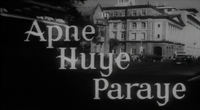
Karma Full HD Movie Download

Prem Tapasya (1983) Full HD Movie Download
.jpg)
Gumnaam (1965) Full HD Movie Download
.jpg)
Pudhu Pudhu Arthangal Full HD Movie Download
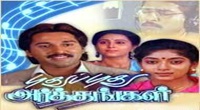
Ganda Hendathi Full HD Movie Download

Aa Re Sathi Aaa Full HD Movie Download
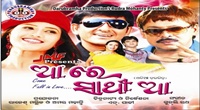
Mate Anidela Lakhe Phaguna Full HD Movie Download
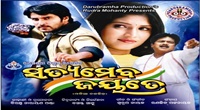
Mere Chor Mandli Full HD Movie Download
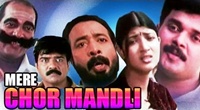
Sanjog (1972) Full HD Movie Download
.jpg)
Patnam Vachina Pativratalu Full HD Movie Download
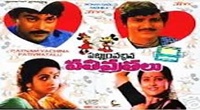
Bahurani Full HD Movie Download
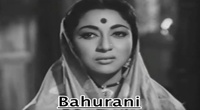
Phir Wohi Darr Full HD Movie Download
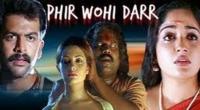
The Matrix Full HD Movie Download
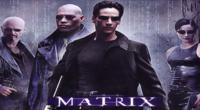
King Soloman Full HD Movie Download
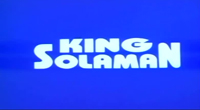
Kamini Full HD Movie Download
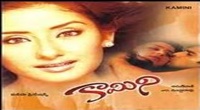
Donga Mogudu Full HD Movie Download
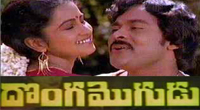
Shankaravam Full HD Movie Download
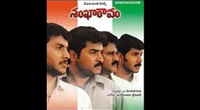
Dongalaku Saval Full HD Movie Download
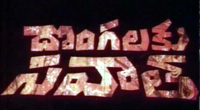
Insaan Jaag Utha Full HD Movie Download
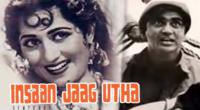
Naughty Boy Full HD Movie Download
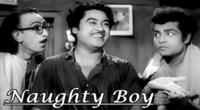
Download latest Movie from bollywood
- 1> baaghi 3
- 2> THE SKY IS PINK MOVIE FULL STORY AND REVIEW
- 3> Luka Chuppi
- 4> TO ALL THE BOYS I’VE LOVED BEFORE
- 5> Kabir Singh
- 6> Street Dancer 3D
- 7> Simmba
- 8> Gone Girl
- 9> The Girl Who Lived
- 10> Ludo
- 11> DILWALE DULHANIA LE JAYENGE
- 12> GUILTY
- 13> The Godfather
- 14> Adventures of Rusty
- 15> Sooryavanshi
- 16> Satyameva Jayate 2
- 17> Thappad
- 18> Bhool Bhulaiyaa 2
- 19> KGFChapter 2
- 20> Mardaani 2
- 21> Pinjar
- 22> Shivaji maharaj
- 23> Ek Villian 2
- 24> Hungama 2
- 25> Divergent
- 26> Mumbai Saga
- 27> The Internship
- 28> HIT (telugu)
- 29> Panga
- 30> The perfect date
- 31> 16 December
- 32> Gopala Gopala (Telugu)
- 33> Brahmastra
- 34> Gangubai Kathiawadi
- 35> Manmadhudu
- 36> Nenu local
- 37> Mahanati
- 38> Shatamanam bavathi
- 39> Lagaan
- 40> After
- 41> MOM
- 42> Shamshera
- 43> Raguvaran BTech
- 44> Khakee
- 45> The villain
- 46> OM
- 47> Mr. perfect
- 48> Bueatifull mind
- 49> Hichki
- 50> Gabbar Singh
- 51> Jogi
- 52> Before Sunrise
- 53> Before Sunset
- 54> Before Midnight
- 55> The Big Bull
- 56> Top Gun: Maverick
- 57> The Purge
- 58> The Sky is Pink
- 59> Laxmmi Bomb
- 60> Sadak 2
- 61> Sufna
- 62> Prithviraj
- 63> PK
- 64> Coolie No 1(2020)
- 65> Black Widow
- 66> Dear Zindagi
- 67> Dil Bechara
- 68> PHIR HERA PHERI
- 69> WAR
- 70> Dostana
- 71> RRR: Roudram Ranam Rudhiram
- 72> Maidan
- 73> Dabbang 3
- 74> Chhalaang
- 75> life as we know it
- 76> SherShaah
- 77> Sandeep Aur Pinky Faraar
- 78> Event Horizon
- 79> 83
- 80> Radhe: Your Most Wanted Bhai
- 81> Gunjan Saxena: The Kargil Girl
- 82> Mr India
- 83> Vivah
- 84> Anokha Bandhan
- 85> Ghost
- 86> Bhoot: Part One - The Haunted Ship
- 87> Haseen Dilruba
- 88> Laal Singh Chaddha
- 89> Qismat
- 90> Rajput
- 91> Drive
- 92> Dil Chahta Hai
- 93> Dil Ki Baazi
- 94> Dil Ka Rishta
- 95> Teesri Manzil
- 96> Dil
- 97> Love Aaj Kal
- 98> Khaali Peeli
- 99> Bunty Aur Babli 2
- 100> Atrangi Re
- 101> Gulabo Sitabo
- 102> Jodi
- 103> Suraj Pe Mangal Bhari
- 104> Deewana
- 105> Attack
- 106> Sardar Udham Singh
- 107> Toofan
- 108> THE LOVEBIRDS
- 109> Jersey
- 110> Ginny Weds Sunny
- 111> Thalaivi
- 112> Shiddat
- 113> Angels vs Zombies
- 114> Koi Mil Gya
- 115> Thank God
- 116> Bhuj: The Pride of India
- 117> Hum Aapke Hain Kaun
- 118> The Platform
- 119> Bird Box
- 120> Roohi Afzana
- 121> Torbaaz
- 122> Nikamma
- 123> World War Z
- 124> Extraction
- 125> Train to Busan
- 126> Life of Pi
- 127> SHAADI MEIN JROOR AANA
- 128> Himmat Aur Mehnat
- 129> To All The Boys: P.S. I Still Love You
- 130> Mimi
- 131> Good Newwz
- 132> Shubh Mangal Zyada Saavdhan
- 133> Raabta
- 134> Harry Potter and the Philosopher's Stone
- 135> Harry Potter and the Chamber of Secrets
- 136> Chhapaak
- 137> War of the Worlds
- 138> Harry Potter and the Prisoner of Azkaban
- 139> Harry Potter and the Goblet of Fire
- 140> MURDER MYSTERY
- 141> Shakuntala Devi
- 142> Bachchan Pandey
- 143> Jayeshbhai Jordar
- 144> Sheer Qorma
- 145> Saina
- 146> 'O' Pushpa I hate tears
- 147> Kedarnath
- 148> MS Dhoni The Untold Story
- 149> Chhichhore
- 150> Badhaai Ho
- 151> Unstoppable
- 152> Oz the Great And Powerful
- 153> The Girl on the Train
- 154> Haathi Mere Saathi 2020
- 155> The Conjuring: The Devil Made Me Do It
- 156> Gandhi Se Pehle Gandhi
- 157> The Song of Scorpions
- 158> Srimanthudu
- 159> Hello Guru Prema Kosame
- 160> Beauty and The Beast
- 161> Black Panther
- 162> Charlie and the Chocolate Factory
- 163> Bole Chudiyan
- 164> Fidaa
- 165> Duvvada Jagannadham
- 166> Bruce Lee: The Fighter
- 167> Hyper
- 168> Yaara
- 169> Red (2020)
- 170> Shivam
- 171> That Is Mahalakshmi
- 172> Nishabdham
- 173> Aashram 2020 web series
- 174> Laxmii
- 175> Mismatched
- 176> STUDENT OF THE YEAR 2
- 177> NAIL POLISH
- 178> Ramprasad Ki Tehrvi
- 179> KAAGAZ
- 180> 12 o Clock
- 181> The Power
- 182> bolo hau
- 183> Tribhanga
- 184> JAMUN
- 185> Madam Chief Minister
- 186> Maasaab
- 187> Aadhaar
- 188> Tanhaji
- 189> Bhaagi 3
- 190> Bhootnath
- 191> MALANG
- 192> Jai Mummy Di
- 193> Haathi Mere Saathi 2021
- 194> Shakeela
- 195> Unpaused
- 196> Annayya
- 197> Vamsoddharakudu
- 198> Mrugaraju
- 199> Narasimha Naidu
- 200> Sankranti
- 201> Manasu Maata Vinadhu
- 202> Anjaane
- 203> Apaharan
- 204> Bachke Rehna Re Baba
- 205> Bewafaa
- 206> Roohi
- 207> Radhe
- 208> Zindagi Khoobsoorat Hai
- 209> Yeh Mohabbat Hai
- 210> Yeh Kya Ho Raha Hai?
- 211> The Tomorrow War
- 212> DehradunDiary
- 213> Meri Shaadi Karaoo
- 214> Matruu Ki Bijlee Ka Mandola
- 215> No One Killed Jesica
- 216> Aag Ka Goola
- 217> Eight Million Dollars
- 218> Three Hundred
- 219> Cats and Dog
- 220> Decoy
- 221> Gold Rush
- 222> You Have Got Mail
- 223> Final Destination three
- 224> Tofan
- 225> Jungle
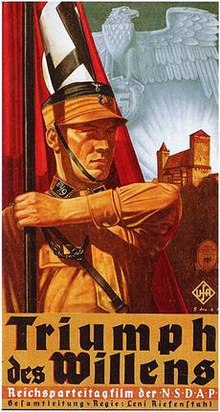 Story of movie Triumph Of The Will :
Story of movie Triumph Of The Will : 